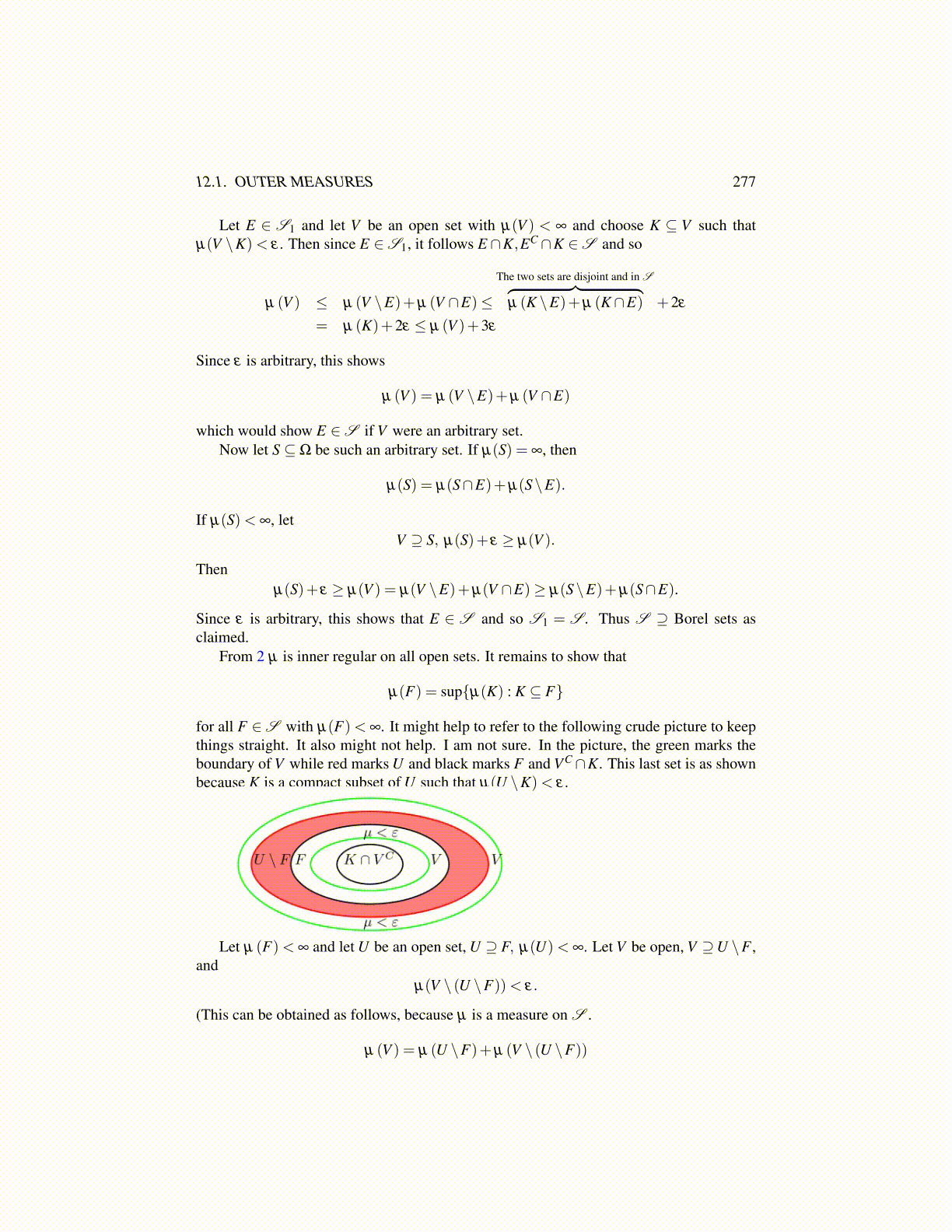
12.1. OUTER MEASURES 277
Let E ∈ S1 and let V be an open set with µ(V ) < ∞ and choose K ⊆ V such thatµ(V \K)< ε . Then since E ∈S1, it follows E ∩K,EC ∩K ∈S and so
µ (V ) ≤ µ (V \E)+µ (V ∩E)≤
The two sets are disjoint and in S︷ ︸︸ ︷µ (K \E)+µ (K∩E) +2ε
= µ (K)+2ε ≤ µ (V )+3ε
Since ε is arbitrary, this shows
µ (V ) = µ (V \E)+µ (V ∩E)
which would show E ∈S if V were an arbitrary set.Now let S ⊆Ω be such an arbitrary set. If µ(S) = ∞, then
µ(S) = µ(S∩E)+µ(S\E).
If µ(S)< ∞, letV ⊇ S, µ(S)+ ε ≥ µ(V ).
Thenµ(S)+ ε ≥ µ(V ) = µ(V \E)+µ(V ∩E)≥ µ(S\E)+µ(S∩E).
Since ε is arbitrary, this shows that E ∈ S and so S1 = S . Thus S ⊇ Borel sets asclaimed.
From 2 µ is inner regular on all open sets. It remains to show that
µ(F) = sup{µ(K) : K ⊆ F}
for all F ∈S with µ(F)< ∞. It might help to refer to the following crude picture to keepthings straight. It also might not help. I am not sure. In the picture, the green marks theboundary of V while red marks U and black marks F and VC∩K. This last set is as shownbecause K is a compact subset of U such that µ(U \K)< ε .
Let µ (F)< ∞ and let U be an open set, U ⊇ F, µ(U)< ∞. Let V be open, V ⊇U \F ,and
µ(V \ (U \F))< ε.
(This can be obtained as follows, because µ is a measure on S .
µ (V ) = µ (U \F)+µ (V \ (U \F))